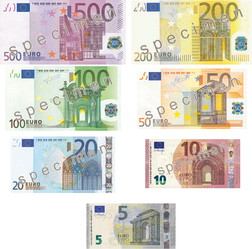- Преподавателю
- Иностранные языки
- Раздаточный материал по теме «Виды денег»
Раздаточный материал по теме «Виды денег»
| Раздел | Иностранные языки |
| Класс | - |
| Тип | Другие методич. материалы |
| Автор | Конюшенко А.Н. |
| Дата | 25.04.2014 |
| Формат | docx |
| Изображения | Есть |
5
Pound sterling
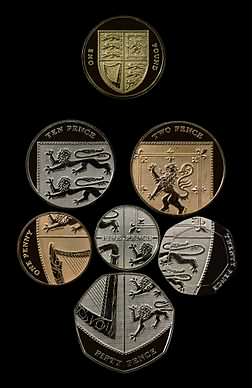
All frequently used coins except the £2 coin (coins shown are those after the extensive 2008 redesign).
Official user(s): United Kingdom  , Guernsey, Isle of Man, Jersey.
, Guernsey, Isle of Man, Jersey.
Subunit 1/100 penny
Symbol: £ ; penny - p
Plural : pounds ; penny - pence
Coins: Freq. used 1p, 2p, 5p, 10p, 20p, 50p, £1, £2
Rarely used 3p, 4p, 25p, £5, £500 (Silver Kilo), £1,000 (Gold Kilo)
Banknotes: Freq. used £5, £10, £20, £50
Peso
The word peso (meaning weight in Spanish) was the name of a coin that originated in Spain and became of immense importance internationally. Peso is now the name of the monetary unit of several former Spanish colonies.
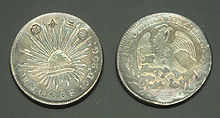
Countries currently using the peso: Argentina, Chile, Colombia, Cuba, Dominican Republic, Mexico, Uruguay.
Franc
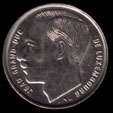
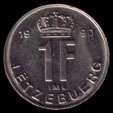
The franc (₣) is the name of several currency units. The French franc was the former currency of France until the euro was adopted in 1999. The Swiss franc is a major world currency today due to the prominence of Swiss financial institutions.
The countries that use francs include Switzerland, Liechtenstein, and most of the Francophone countries of Africa. Before the introduction of the euro, francs were also used in France, Belgium and Luxembourg, while Andorra and Monaco accepted the French franc as legal tender (Monegasque franc). The franc was also used within the French Empire's colonies, including Algeria and Cambodia.
One franc is typically divided into 100 centimes. The French franc symbol was an F with a line through it (₣) or, more frequently, only an F.
Escudo
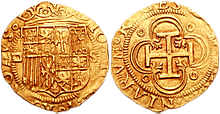
Juana & Charles I. 1504-1555. AV Escudo (24 mm, 3.38 g, 9 h). Seville mint.
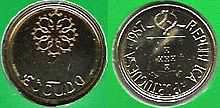
Portuguese coin of 1 escudo, 1987
The escudo is a unit of currency. Historically it was used in Spain, Portugal, and in their colonies in South America, Asia, and Africa. It is still used in Cape Verde to this day. Escudo is Portuguese and Spanish for "shield".
Lira (plural lire) is the name of the monetary unit of a number of countries, as well as the former currency of Italy, Malta, San Marino and the Vatican City, all of which replaced it in 2002 with the euro, and of Israel, which replaced it with the old shekel in 1980. The term originates from the value of a Troy pound (Latin libra) of high purity silver. The libra was the basis of the monetary system of the Roman Empire.
Particularly this system was kept during the Middle Ages and Modern Age in England, France, and Italy. In each of these countries the libra was translated into local language: pound in England, livre in France, lira in Italy. The Venetian lira was one of the currencies in use in Italy and due to the economic power of the Venetian Republic a popular currency in the Eastern Mediterranean trade.
L, sometimes in a double-crossed script form (₤) or less often single-crossed (£), is usually used as the symbol (occasionally a plain capital "L" crossed by a bar is used).

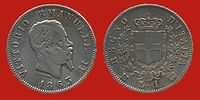
1 Turkish Lira 1 Italian lira 1863
Dinar
The history of the dinar dates to the gold dinar, an early Islamic coin corresponding to the Byzantine denarius auri. The modern gold dinar is a modern bullion gold coin.
Countries currently using a currency called "dinar": Algeria, Bahrain, Iraq, Jordan, Kuwait, Libya , Macedonia, Serbia, Tunisi.
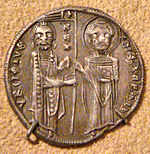 Serbian silver Dinar during reign of Stephen Uroš I of Serbia in
Serbian silver Dinar during reign of Stephen Uroš I of Serbia in 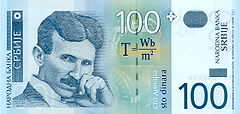 13th century100 Serbian dinars bearing the likeness of Nikola Tesla.
13th century100 Serbian dinars bearing the likeness of Nikola Tesla.
Japanese yen
Banknotes Coins
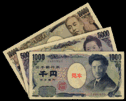

User(s) Japan
Symbol ¥ (international); 円 (Japan-present day); 圓 (Japan-traditional)
Coins ¥1, ¥5, ¥10, ¥50, ¥100, ¥500
Banknotes ¥1000, ¥2000, ¥5000, ¥10,000
The Japanese yen ( symbol: ¥; code: JPY) is the official currency of Japan. It is the third most traded currency in the foreign exchange market after the United States dollar and the euro. It is also widely used as a reserve currency after the U.S. dollar, the euro, and the pound sterling.
The ruble or rouble (/ˈruːbəl/; Russian: рубль, IPA: [rublʲ]) (RUB) is a unit of currency of various countries in Eastern Europe and is closely associated with the economy of Russia. Currently, the currency units of Belarus, Russia, Abkhazia, South Ossetia and Transnistria, and, in the past, the currency units of several other countries, notably countries influenced by Russia and the Soviet Union, are named rubles, though they all are different currencies. One ruble is divided into 100 kopecks (Russian: копе́йка, tr. kopeyka, IPA: [kɐˈpʲejkə]).

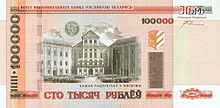
5000 Russian rubles issued in 2006 100,000 Belarusian rubles issued in 2000
The krona
(plural: kronor; sign: kr; code: SEK) has been the currency of Sweden since 1873. Both the ISO code "SEK" and currency sign "kr" are in common use; the former precedes or follows the value, the latter usually follows it, but especially in the past, it sometimes preceded the value. In English, the currency is sometimes referred to as the Swedish crown, since krona literally means crown in Swedish. The Swedish krona was the 9th most traded currency in the world by value in April 2010.
Coins: Freq. used 1 kr, 5 kr, 10 kr; Rarely used 2 kr
Banknotes: Freq. used 20 kr, 50 kr, 100 kr, 500 kr; Rarely used 1000 kr
Countries: Austro-Hungaria, Czech Republic, Czechoslovakia, Dania, Estonia, Iceland, Norwegia, Slovakia, Sweden, Yugoslavia.
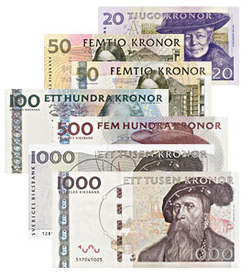
Dollar
A United States two-dollar bill. Rarely seen in circulation, but still in production and legal tender. 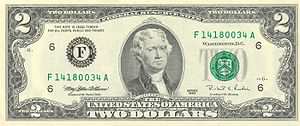
Dollar (often represented by the peso and dollar sign $) is the name of several currencies, including those of Australia, Belize, Brunei, Canada, Hong Kong, Namibia, New Zealand, Singapore, Taiwan, the United States, and previously Zimbabwe. The U.S. dollar is the official currency of East Timor, Ecuador, El Salvador, Federated States of Micronesia, Marshall Islands, Palau, and for banknotes, Panama. Generally, one dollar is divided into one hundred cents.
The euro (sign: €; code: EUR) is the currency used by the Institutions of the European Union and is the official currency of the eurozone, which consists of 18 of the 28 member states of the European Union: Austria, Belgium, Cyprus, Estonia, Finland, France, Germany, Greece, Ireland, Italy, Latvia, Luxembourg, Malta, the Netherlands, Portugal, Slovakia, Slovenia, and Spain.
The euro is the second largest reserve currency as well as the second most traded currency in the world after the United States dollar. As of November 2013, with more than €951 billion in circulation, the euro has the highest combined value of banknotes and coins in circulation in the world, having surpassed the U.S. dollar.
